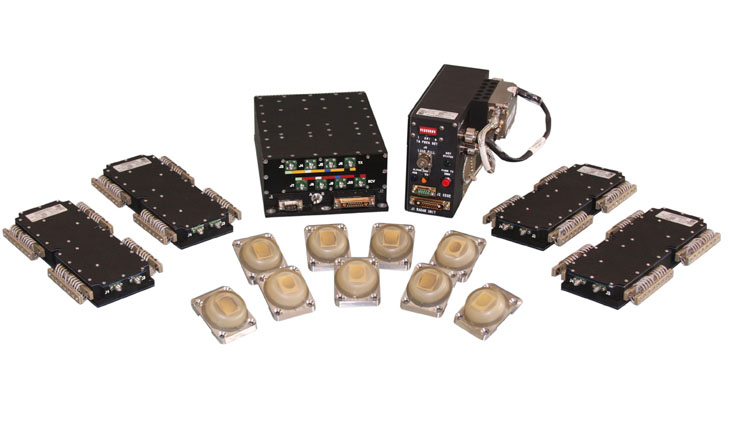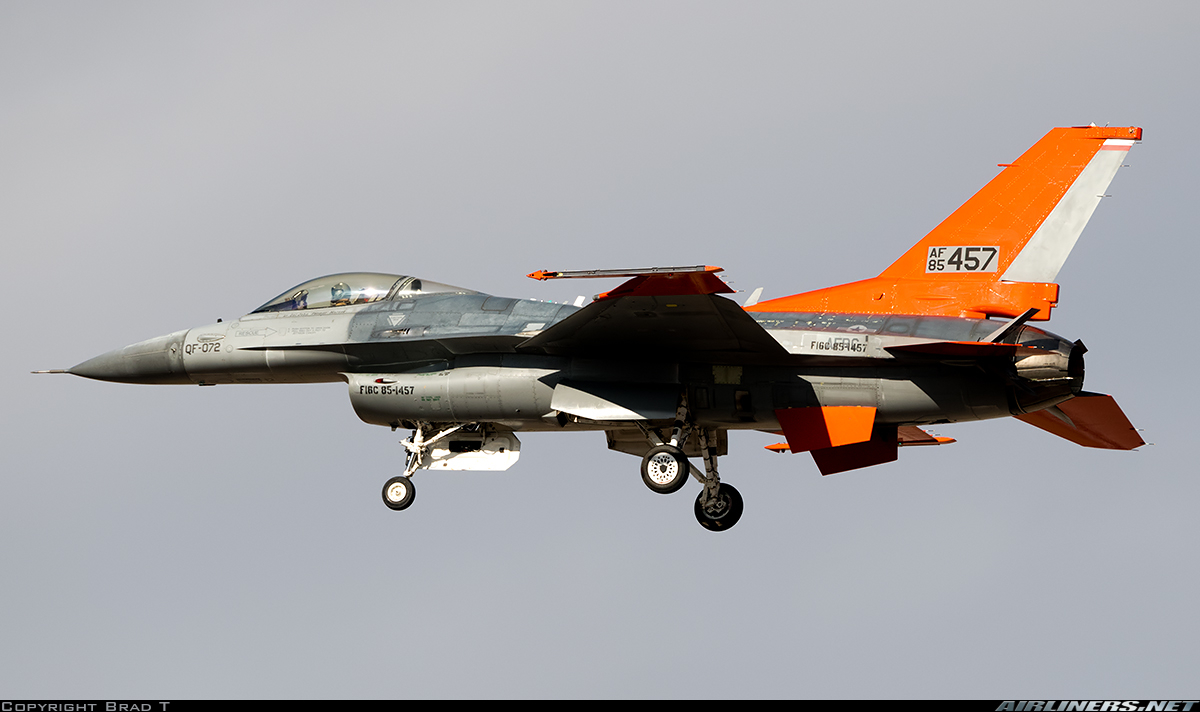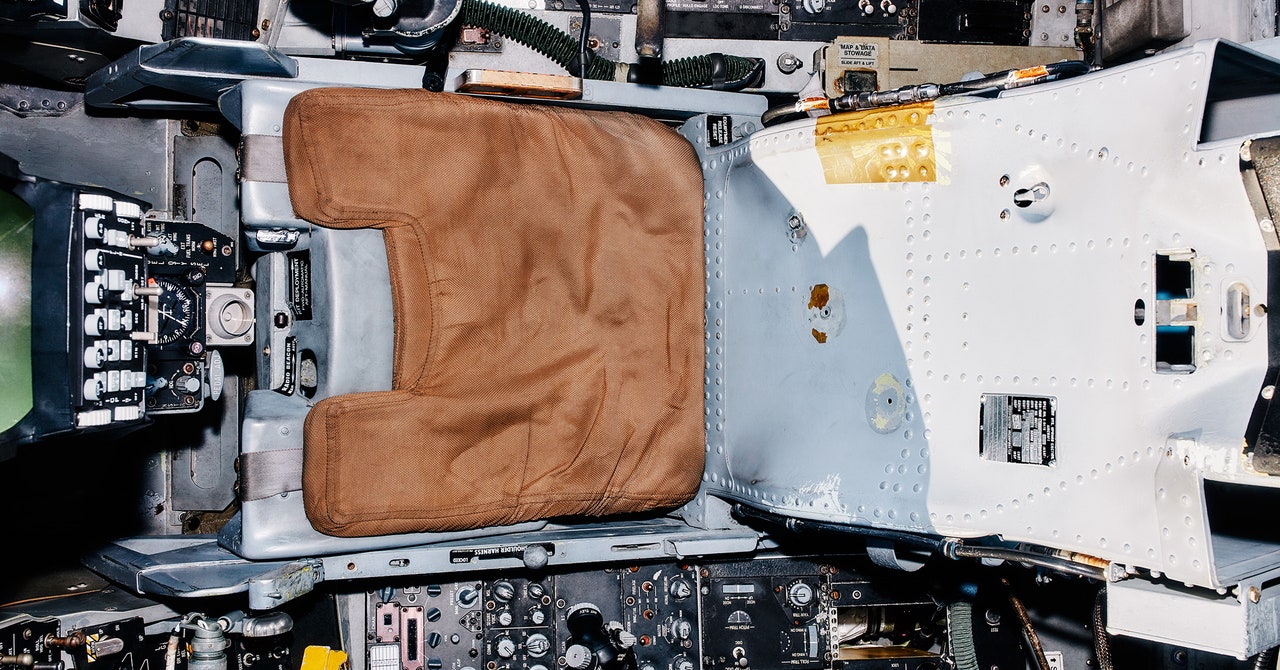This article first appeared in the Mar-Apr 2018 issue of MTSN magazine. It has been made available for non-subscribers following its shortlisting by the 2018 Defence Media Awards.
The USAF has for decades used full-scale aerial targets as platforms for training or to test and validate various air- and ground-based weapon systems. The QF-16 is the current aircraft in focus to fulfil this role, for which operators must complete qualifications in remote piloting.
Aircraft used in the USAF’s full-scale aerial target (FSAT) programme typically come from decommissioned stocks that have been maintained at the service’s 309th Aerospace Maintenance and Regeneration Group (AMARG), located at Davis-Monthan AFB in Arizona.
Various platform types have been used over the years, and in most cases are in sufficient enough numbers to make it worthwhile to invest in R&D to convert them to the FSAT role. One notable type is the QF-4 Phantom II, which flew its last unmanned mission on 21 December 2016.
FSAT aircraft are expendable assets, so numbers are finite. Dwindling stocks of obsolete replacement QF-4 parts and flyable airframes led the air force to consider a newer platform which would deliver supersonic, high-g and heavy payload capabilities, while also providing modern fourth-generation aircraft threat representation. To satisfy these requirements, the Lockheed Martin F-16 Fighting Falcon, or Viper, was chosen.
The chosen one
The single-engine F-16 was picked over the F-15 for two main reasons – operating cost and the quantity available. In addition, the fly-by-wire nature of the F-16 is better for integration with remote systems than the mechanical control stick actuation systems of the QF-4 (and likely required on the F-15 had it been used).
In March 2010, the USAF selected Boeing to modify F-16s to the QF-16 FSAT configuration. These optionally manned aircraft are modified to fly with a pilot for testing and training, or to fly remotely for live missile testing.
After F-16A Block 15 and F-16C Block 25/30 aircraft are selected for regeneration by AMARG, they are brought back up to flying condition and are then transferred to Cecil Field, Florida, where Boeing has established a conversion facility. Once modified into QF-16 ‘Zombie Vipers’, the platforms are flown to Tyndall AFB in Florida and assigned to the 82nd Aerial Target Squadron (ATRS), which maintains the US DoD’s only FSAT programme. The squadron is a geographically separated part of the 53rd Wing based at Eglin AFB, Florida, all of which falls under USAF Air Combat Command.
The QF-16 FSAT maintains all the inherent capabilities of the baseline F-16, including supersonic flight and 9g manoeuvrability. Conversion is done by adding drone peculiar equipment (DPE), such as an automatic flight control computer (AFCC) – that is likened to the ‘remote-control brains’ of the jet – and a universal replacement autopilot, which acts as the navigation interface for the AFCC.
Additional DPE includes an autothrottle, backup altimeter, command telemetry system, payload control system, visual augmentation system (VAS) and a vector scoring system.
The QF-16 is also fitted with a flight termination system (FTS) behind the cockpit and forward of the engine. If a destruct signal is initiated, the FTS charge explodes, severing the forward portion of the aircraft from the aft. The USAF tested the system at Eglin AFB in 2010 ‘to demonstrate that the FTS design will be sufficient to immediately terminate the flight of a QF-16, as well as to determine a range safety debris footprint’.
QF-16s that are intended to be used as missile targets are referred to as NULLO (not under live local operator) aircraft, which have the FTS installed for their flights and will never be manned again. Current priority candidates for the NULLO fleet are the F-16As that have been converted into QF-16s.
The VAS, which is similar to the smoke-generating system used by the USAF Thunderbirds display team, has an important role to play. ‘The VAS helps us identify NULLO aircraft and distinguish them from any wingmen,’ said Lt Col Kendall Spencer, 82nd ATRS director of operations.
‘Also, F-18s on the range look a lot like the F-16, so it’s a discriminator. VAS also turns smoke on if the aircraft encounters loss of carrier, meaning it loses contact with the TCS. We also turn smoke on when we try to rejoin the aircraft and escort it back to base. It’s basically a visual aid which is only visible up to 10nm (18.5km).’
QF-16s operated under remote control are flown via a target control system (TCS), which at Tyndall AFB links to the Gulf Range Drone Control System (GRDCS), a line-of-sight data link that can control the jet up to 220km away.
The unmanned QF-16 has been flying at Tyndall since late 2012, and was first shot down over the Gulf of Mexico on 5 September 2014. Boeing delivered the first production platform to the 82nd ATRS in March 2015, and Air Combat Command declared initial operational capability (IOC) for the type at Tyndall AFB on 23 September 2016.
In control
Pilots reporting to the 82nd ATRS are typically from combat or training units and are already qualified on the F-16, or they have experience on other fast jet airframes and complete a qualification programme at an F-16 fighter training unit. An upgrade course must be undertaken by all in order to become a safety and drone chase pilot, the primary roles which 82nd ATRS personnel conduct as they fly the QF-16.
The safety pilot upgrade programme consists of classroom-based learning on the TCS and DPE, as well as instruction on how different manoeuvres are flown, what they should look like in the airspace and specifics on the QF-16’s auto-takeoff and -land modes.
Training as a safety pilot consists of five sorties that build upon each other, before certification as a drone chase pilot, which takes two sorties. ‘Those flights give us an opportunity to practise chasing a drone. It’s not much different from flying as a normal wingman, but there are some specific drone pickups for joining on a NULLO QF-16 and also for the BQM-167 sub-scale aerial targets. Our mission requirements dictate that we always chase the NULLOs out to the airspace,’ said Spencer.
‘If we’re not shooting a missile at the QF-16, then we’ll usually have a pilot in the airplane in case something goes wrong,’ he explained. ‘Depending upon test customer requirements, we sometimes have a pilot in the airplane who will support all the test points. Other times, we’ll actually have the QF-16 under remote control of the TCS, but with a pilot in the airplane.
‘The reason for that is the TCS has some automatic routines which can take the aircraft through very scripted manoeuvres to meet test point objectives. It takes human error out of the loop, and that’s not to say my pilots aren’t good, it’s just that some of the test points require very specific manoeuvres… One of the advantages of the QF-16 is that it’s very easy to disengage the aircraft from the TCS – all I have to do is hit a paddle switch and I’ll have control.’
Due to the tempo of military operations and personnel movements, all 82nd ATRS remote QF-16 pilots are civilian government employees – retired military pilots who have safety and drone chase qualifications. Upon joining the programme, these individuals operate the BQM-167 sub-scale aerial target drone via the TCS for a few years before they can remotely pilot the QF-16.
Approximately 15 flights are required to train remote QF-16 pilots. The TCS has a simulation mode which they must use once per month to maintain their qualification. In addition, each mission will be rehearsed by using this mode to fly the entire flight profile.
‘There is no live video feed from the actual jet. All the information on the TCS is being transmitted by the jet and is represented on the TCS – the forward view for the remote pilot is just a big ADI [attitude director indicator]. There’s also a high-fidelity high-refresh-rate “God’s eye” view display which is relational to all the aircraft in the test area,’ said Spencer.
Taking the shot
Operational units generally travel to Tyndall, Holloman or Hill AFB to participate in the Weapons System Evaluation Program (WSEP). Each unit spends one to two weeks building, loading and employing air-to-air and air-to-ground ordinance against realistic aerial, ground and maritime targets during Exercises Combat Archer and Combat Hammer.
Before WSEP begins, aviators from participating operational units work with the 83rd Fighter Weapons Squadron (FWS) to determine the appropriate target and manoeuvre profile for evaluating the launch aircraft, missile and pilot/aircrew, as well as maintenance personnel. The chosen profile – which may be the QF-16 FSAT – is given to 82nd ATRS remote pilots who review and test-fly it in the TCS simulator mode. Required changes are coordinated between the remote pilots and 83rd FWS planners before the target flight profile is finalised.
On the day of the shoot, remote pilots meet with aircrew of the firing aircraft, 83rd FWS planners, missile, telemetry and range safety experts and other support assets for a one-hour brief on the specifics of the task. The pilots then step to their TCS stations and link up with maintenance and another pilot who have been readying the QF-16 for its flight.
After approximately 45min of ground checks, and after the missile-shooting aircraft are airborne, the NULLO launches with another QF-16, piloted by a member of the 82nd ATRS as ‘drone chase’. Once in the airspace, the remote pilot checks the NULLO’s systems using the chase pilot for verification. The drone chase flies to a different location and holds, while the NULLO proceeds to a target holding point, before turning towards one another and completing the shot, which is often not taken to impact. The aircraft then fly back to the target hold point and the process repeats.
Depending upon the profile, one NULLO flight can support one to eight individual missile shots. If the QF-16 survives all of the profiles, the drone chase will rejoin, ensure that it has not taken undetected damage, then monitor the aircraft as the remote pilot guides it back to base and oversees the automatic landing. After the QF-16 lands, the aircraft is prepared for the next sortie.
‘Not all test profiles require a missile impact to achieve test objectives,’ Spencer told Shephard. ‘Almost all the missiles that are shot for evaluation have telemetry systems on them, taking the place of the warhead. Unlike a live missile, the telemetry missiles would have to have a direct hit to actually disable the drone.’
Over the course of a year, WSEP sponsored exercises will fire approximately 250 missiles. Of those, around 10% have warheads and are intended to give pilots training while also testing the full chain of an aircraft’s weapon system to engage and destroy a target. During non-WSEP sorties, 50-100 missiles are launched every year to support missile evaluation and radar or host jet systems testing.
‘When the F-22 or the F-35 are going through operational testing, they’ll want to make sure that the software programmes operate and fire their missiles as they desire,’ explained Spencer. ‘We give them profiles to train and test against.
‘When we fly the QF-16 as a NULLO, it’s always in support of a missile test. Sometimes those missile test requirements lead us to fly the aircraft in an air combat manoeuvring type role. For example, testing or evaluating the AIM-9X missile is often during a manoeuvring fight, so we need to remotely fly the NULLO QF-16 in that way. The remote pilot is able to meet test requirements since the TCS can fly the jet to its limits.’
QF-16s, both manned and unmanned, support various test and training exercises. In late 2017, the 82nd ATRS supported Checkered Flag 18-1, where manned QF-16s were loaded with advanced electronic attack pods.
In early January 2018, the same squadron simultaneously flew three manned but remotely piloted QF-16s, and it has previously flown two NULLO QF-16s at the same time.
Ready for action
The QF-16 is considered to be a resilient platform, and has proven its value as a test and training asset in multiple scenarios. One such case involves aircraft QF-004, which arrived at Tyndall AFB on 13 August 2014 and was destroyed by two AIM-9Ms on 19 July 2017. During those three years, it flew 166 times, totalling nearly 187 flight hours (manned – 158 sorties, 179h; NULLO – eight sorties, 8h).
QF-004 was part of the initial fleet of six engineering and manufacturing development QF-16s that were used for initial testing and remote-fly integration. The aircraft’s eight NULLO sorties included Combat Archer support missions and comprised an impressively long life in contrast to the highest count on the current NULLO fleet, which stands at four operations.
The 82nd ATRS also operates a detachment of eight QF-16s at Holloman AFB in New Mexico, with the first flight conducted there on 10 February 2017. These aircraft use the US Army’s White Sands Integrated TCS and partake in operations at White Sands Missile Test Range, most of which are in support of the service’s surface-to-air missile test projects.
Two of Holloman AFB’s QF-16 fleet are NULLO aircraft, which will perform their first flight by April 2018, the same time that the detachment is expected to reach IOC. Detachment 1 at Holloman ultimately anticipates losing three to four NULLO examples per year.
The 82nd ATRS will also deploy a single QF-16 to Point Mugu in April, which will be operated by a remote variant of the GRDCS. The platform will be remotely flown, but in a manned configuration during the test period, which is meant to assess its feasibility to support the USN.
Boeing has now started to receive the first batch of Lot 3 F-16 aircraft from the USAF, with QF-16 production at Cecil Field now at a steady rate of two aircraft per month.
The 82nd ATRS has thus far had three QF-16s shot down from missile shoots. As of early February 2018, the squadron has a complement of 14 manned variants and another six in NULLO configuration. Once full operational capability for the QF-16 is achieved, the 82nd ATRS anticipates losing one unit per month, with a projection of up to 15 per year, fleet-wide.

forums.eagle.ru



 forums.eagle.ru
forums.eagle.ru

